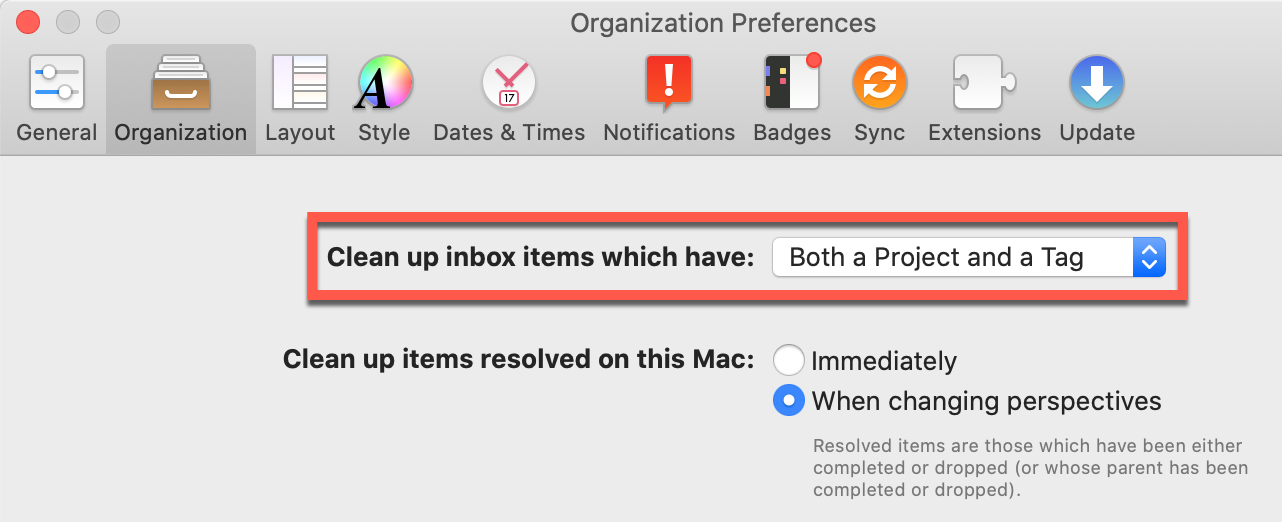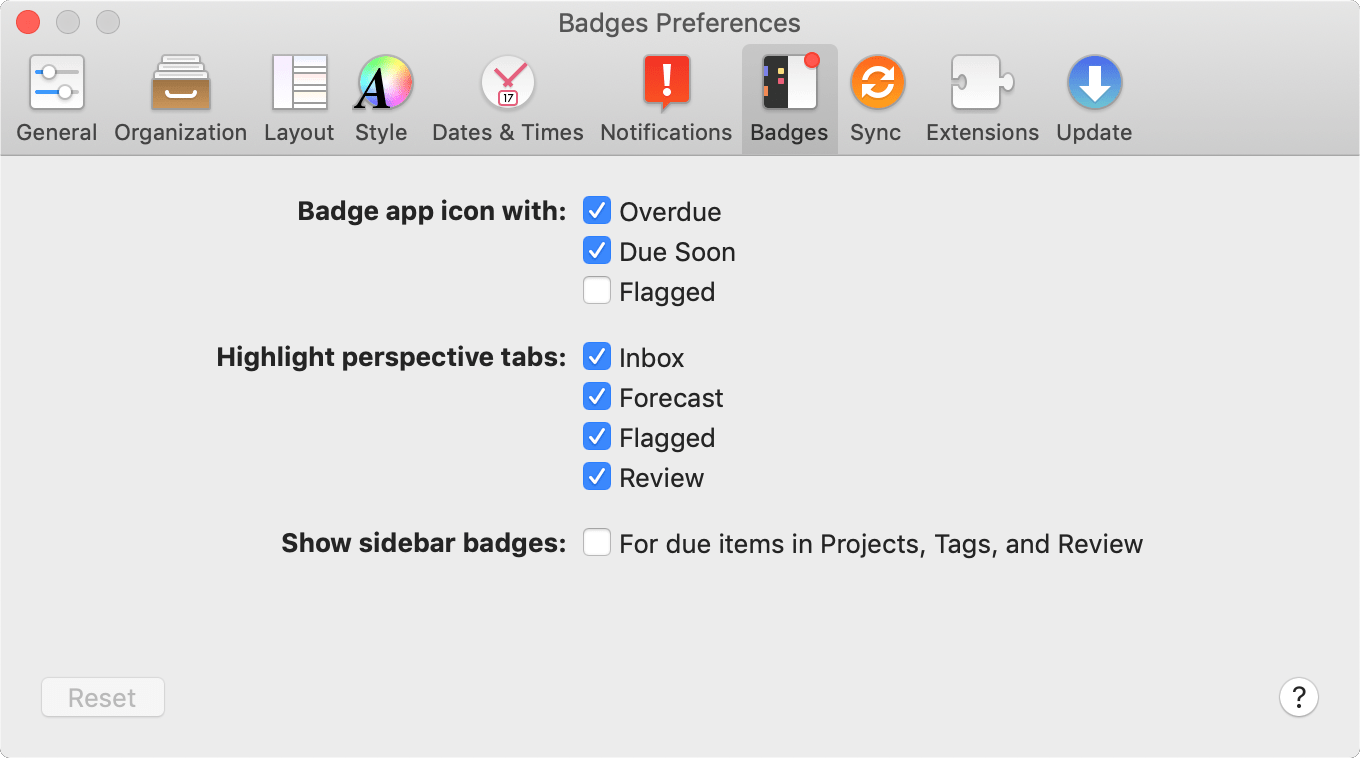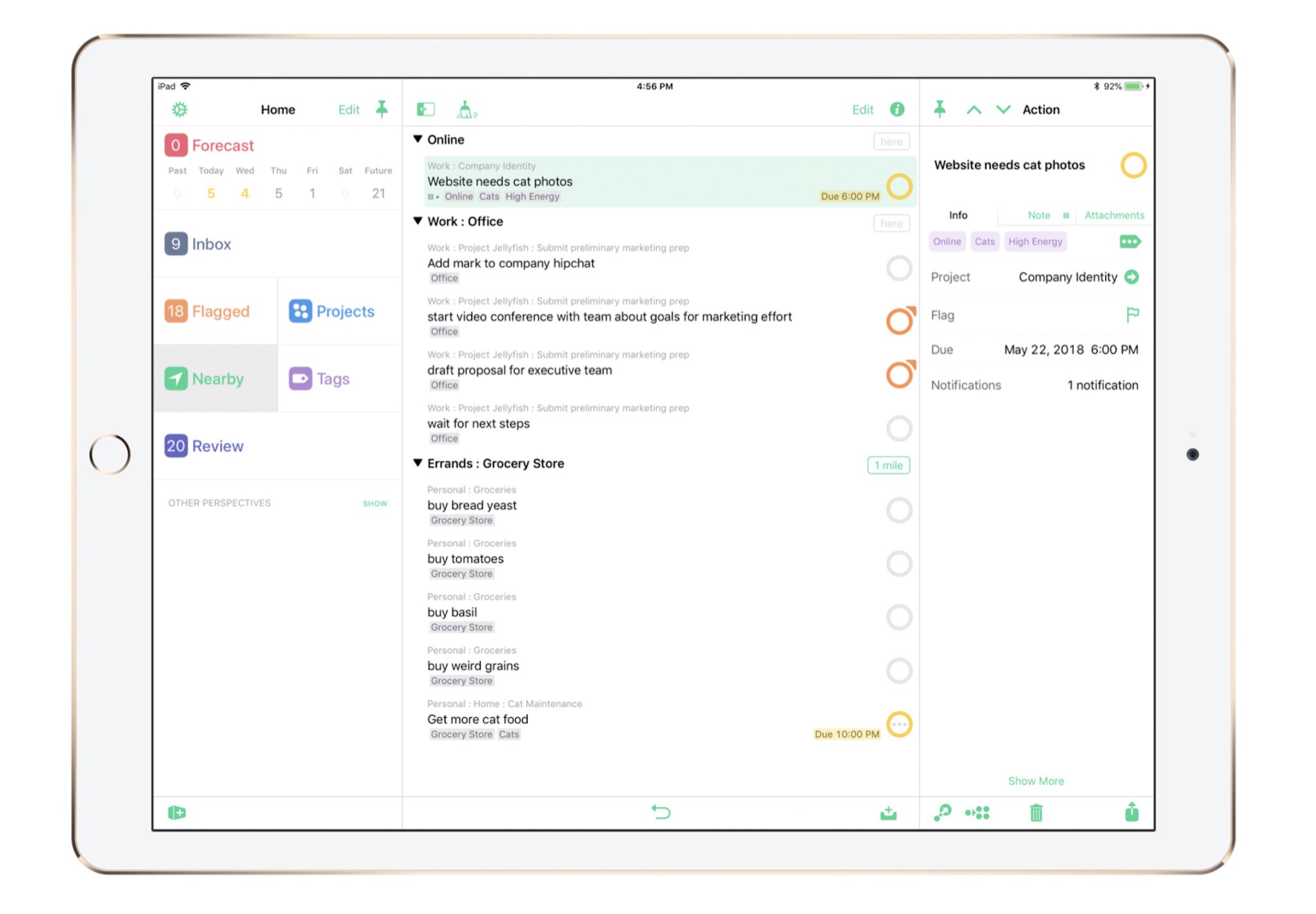OmniFocus acts as a second brain, allowing you to capture and organize all of your activities in a powerful and easy-to-maintain system. Get tasks out of your head, quickly, from anywhere. Adding a task to your Inbox is as simple as typing a quick keyboard shortcut. Stay organized on all your devices.
What is Mail Drop?
Find or create a folder that you are going to want to scan/save to. Right-click on this folder, and select ServicesFolder Actions Setup. Select the “Add files as OmniFocus actions” script. Now you have a folder where any time a file gets saved there, it automatically gets imported to OmniFocus. The account creation process includes instructions for configuring OmniFocus to use your new account (it’s as simple as tapping or clicking a link in an email). Once you’ve configured OmniFocus for sync, you’ll be able to start using Mail Drop. Managing Mail Drop addresses. Mail Drop addresses can be created—or deleted—at any time.
Mail Drop is a feature of the Omni Sync Server that lets you send emails directly into your OmniFocus Inbox. You can create multiple private send-to addresses in order to give access to third parties, and delete those addresses at any time. In order to use Mail Drop, you’ll need to have an Omni Sync Server account (they’re free), and OmniFocus must be configured to actively sync with that account on our server.
Some Examples
- Forwarding actionable emails from your PC at work
- Processing emails on your iPhone or iPad
- Using IFTTT (If This Then That) to automate all kinds of internet-y things
- Allowing a partner to delegate actions directly into your OmniFocus system
Send an email from anywhere to your Mail Drop address, and that email will appear in the OmniFocus Inbox the next time you sync with the Omni Sync Server.
For PC users, OmniFocus for the Web is another great way to add tasks to OmniFocus when you are away from your Mac or iOS devices.
How to get started
If you’re already using the Omni Sync Server to sync OmniFocus, you can log in to the Manage page for your account and create your first Mail Drop address. After logging in, click the Add An Address button to automatically generate the email address (a combination of your account name and a random string of characters)
If you don’t have a Sync Server account yet, you can sign up here. The account creation process includes instructions for configuring OmniFocus to use your new account (it’s as simple as tapping or clicking a link in an email). Once you’ve configured OmniFocus for sync, you’ll be able to start using Mail Drop.
Managing Mail Drop addresses
Mail Drop addresses can be created—or deleted—at any time. You can set up additional Mail Drop addresses by using the Add An Address button again. This allows you to share a unique Mail Drop address with someone else, and give them the ability to send you items right to your OmniFocus inbox.
You’re free to change your mind at a later date and revoke this access, too. For example, perhaps your colleague started sending too many items to your Inbox, or accidentally shared it to a mailing list that’s sending you spam messages. Head back to your Manage page and tap or click Delete on sign out to mark this address for removal. The text will change to a Restore button, allowing you a window to undo this decision (in the event you tapped “Delete” accidentally). Unless you tap or click Restore, the address will be permanently deleted once you click the Sign Out button at the top of the page.

Deleting a Mail Drop address will not impact any others you’ve set up, so any existing integrations and workflows that you’ve configured using other Mail Drop addresses will remain intact.
What kind of information can I add to OmniFocus via Mail Drop?
When you send an email message to Mail Drop, the subject line of that message will become the name of your new Inbox item. The body of the message will become the note; it can contain text, attachments, and simple HTML (more complex formatting is stripped).
When forwarding a message to Mail Drop we also include a link back to the original copy of the forwarded message in the note of the new Inbox item.
How does Mail Drop work with encrypted databases?
OmniFocus encrypts its database on the sync server in a way that prevents Mail Drop from adding directly to it. Instead, when Mail Drop detects that you’ve encrypted your database, it places new items into a special container within your account. When you sync, OmniFocus checks this container for new items and integrates (and encrypts) them, then removes the items from the container. Items are not encrypted while they are waiting to be integrated, but we do not consider this to be any less secure than emailing items across the internet in the first place.
Can I specify my own Mail Drop address?
The string of characters after your username in your Mail Drop address is random as a precaution against spam, malware, and other nefarious things from making their way to your OmniFocus inbox. (If you have a problem with an address, you can always delete that Mail Drop address from your Account Management page and create a new one to get a new unique string.) Adding the address to your Contacts makes it easy to use Mail Drop without having to remember the whole address.
If you’d prefer a custom address that’s easier to share with others, you could create an alias address through your email provider that forwards to your sync address. For more info, read: iCloud: Create or change email aliases
Since email attachments are included when you add to OmniFocus via Mail Drop, keep in mind that those attachments will add to the overall size of your database until removed. Letting too many attachments add up in your database over time can potentially lead to sync trouble down the road. For that reason, if you’re forwarding a lot of emails with attachments, we recommend cleaning out old attachments every so often, as outlined here.
Last Modified: Jan 29, 2020Related Articles
Appendix E
OmniFocus as a standalone app is an incredibly powerful tool. Beyond what you can do with OmniFocus alone, the app interacts with other apps and services to help you get stuff done with even greater convenience and efficiency.
This appendix lists ways that OmniFocus can be used in tandem with other software to achieve your goals.
Email Capture (Mail Drop)
Mail Drop is a feature of the Omni Sync Server that lets you send emails directly to your OmniFocus Inbox. You can create multiple private send-to addresses to give access to third parties, and delete those addresses at any time. In order to use Mail Drop, you’ll need to have an Omni Account (they’re free), and OmniFocus must be configured to actively sync with that account on our server.
If you’re already using Omni Sync Server to sync OmniFocus, you can log in to the Omni Sync Server web interface and create your first Mail Drop address. After logging in, click or tap Add An Address to automatically generate the email address (a combination of your account name and a random string of characters).
If you don’t have a Omni Account yet, you can sign up in OmniFocus Settings under Omni Account. The account creation process includes instructions for configuring OmniFocus to use your new account.
When you send an email message to a Mail Drop address, the subject line of that message becomes the name of the new Inbox item. The body of the message becomes the note, which can contain text and simple HTML; attachments to the email (such as images) are added as attachments to the OmniFocus item as well.
See OmniFocus Mail Drop on the Omni support website for more details on this feature.
Workflow Automation
With some knowledge of programming, you can use callback URLs to automate conversations between OmniFocus and other apps on your iOS device. This offers the ability to set up project templates with custom data fields, for example, along with many other powerful automation possibilities.
This is an advanced feature that requires some tinkering under the hood; for help getting started integrating OmniFocus with the workflow app of your choice, see URL Schemes in OmniFocus on the Inside OmniFocus website.
Omni Automation
OmniFocus Pro supports automating tasks in OmniFocus using JavaScript. You can create your own plug-ins or use plug-ins created by others; see the Omni Automation website for a set of sample Plug-Ins that you can use right away, or find documentation resources for creating your own.
Installing Omni Automation Plug-Ins
Once you have a plug-in that you would like to try, you will need to install it in a connected folder that OmniFocus recognizes.
If you are looking for a place to start with plug-ins, head on over to the Omni Automation website and find one you like.

First, download the plug-in file and navigate to it in the Files app. If it is zipped, tap the file to unzip it. The resulting file will have an .omnijs extension (the file format for Omni Automation Plug-Ins).
Next, tap the plug-in file, which presents an import dialog in OmniFocus:
If everything looks in order, choose an install destination from the Location menu and tap Install Plug-In. The plug-in is copied to that location and appears in the Plug-Ins management screen.
iOS might not associate the .omnijs Acrobat dc torrent mac. file type with OmniFocus the first time you try to open a plug-in from the Files app. If this happens, you can use the Share menu to open the plug-in in OmniFocus instead.
- Tap and hold the plug-in file in Files until the contextual menu appears.
- Choose Share and scroll through the available Application options. If Open in OmniFocus doesn't appear, tap More and scroll until you find it.
- Tap Open in OmniFocus and the plug-in import dialog appears, ready to continue the installation process.
After installing your first plug-in this way, for future installations tapping the plug-in file in Files will open the import dialog directly.
Once you have installed your first plug-in it appears as an action in the Automation menu and the Share dialog, ready to use. Tap it to run the plug-in and start experimenting with what Omni Automation can do.

Omnifocus Inbox
Managing Plug-Ins
Omnifocus Inbox Email
Use the Plug-Ins screen (opened with Configure Plug-Ins in the Automation menu or Automation settings) to add, remove, and organize your Omni Automation Plug-Ins and connected plug-in locations.
Omnifocus Inbox Shortcut
On My [Device]—This is the default local storage location for plug-ins associated with OmniFocus, a folder that lives on your device inside the OmniFocus container. Use the Files app to move plug-in files into this folder.
OmniFocus in iCloud Drive—With iCloud Drive set up on your device, OmniFocus can use its application folder there to sync plug-ins between your various devices and the cloud. Note that plug-in files are stored separately from your OmniFocus sync database and they must be managed separately. iCloud Drive is not capable of syncing your OmniFocus database.
Custom Locations—Beyond the two default storage locations above, you can link as many additional plug-in folders as you like. These are regular folders on your device or in the cloud that contain the plug-in files that you want to use in OmniFocus. Once a folder is linked, its plug-ins become available in the Automation menu.
Add Linked Folder—Tap to open a file browser for selecting additional plug-in folders that you would like to link to OmniFocus.
Unlink Docker desktop for ubuntu. —Tap to remove a custom location's association with OmniFocus. This removes the folder and its contents from the Plug-Ins screen and Automation menu, but does not move or alter its contents in any way. If you change your mind, you can tap Add Linked Folder again to restore it.
Plug-In Info—Tap a plug-in's row to show detailed information about the plug-in, including its name, version, author, description, and information about the actions that the Plug-In contains. You can also share the plug-in from this detail view, delete it, or set up keyboard shortcuts for the plug-in's actions.
OmniFocus for the Web
Omnifocus Inbox
OmniFocus for the Web is a browser-based companion app that works in tandem with OmniFocus for Mac and iOS to provide access to the core features of OmniFocus from any modern web browser. The app is provided as an optional subscription-based add-on to your existing OmniFocus purchase, or as part of an OmniFocus subscription package.
Omnifocus Send To Inbox Not Working
Learn more about subscribing to OmniFocus for the Web here.

